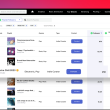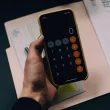Many times, technology gets in the way of enjoying what’s right in front of us. While many technological devices are meant to make us feel more connected, a lot of them leave us feeling more disconnected than ever before.
However, while technology certainly has its drawbacks, some of the benefits are undeniable. For example, technology has transformed the way many disabled people live their lives. Over 15% of the world’s population (one billion people) suffer from some form of disability.
Read on to learn how technology helps disabled people in their everyday lives.
Table of Contents
1. Digital Assistants
Digital assistants, also known as voice assistants, help people with disabilities in a multitude of ways. Some of the most popular voice assistants include Siri, Alexa, and Cortana.
Voice assistants can be especially beneficial for those who suffer from vision impairment or blindness. From texting caretakers to placing phone calls to ordering groceries, voice assistants can help those with disabilities go through their daily lives with ease and save time.
Google Home is a voice assistant that can be particularly beneficial for those who suffer from memory loss. Google’s voice assistant can send users proactive medications to remind them to take their medications, change out their laundry, and pay their bills.
Of course, digital assistants need to work in accordance with disability laws. Here’s more info from Sweetlaw.com if you’re looking to learn about disability laws.
2. Smartphone Apps
There’s a wide array of smartphone apps out there to help people with disabilities. Here are some of the best apps to check out:
Petralex: This is an augmented hearing app that is designed to help people with hearing disabilities hear better, particularly in social situations.
Be My Eyes: This app is for those who are blind or suffer from impaired vision. This app instantly links volunteers from all over the world with someone who is able to see. The person who can see can describe to the user what’s in front of them by the use of the smartphone’s camera.
Choice Works: This app is best-suited for people and children with autism. The app helps users learn how to verbalize their emotions and create daily routines.
Wheelmap/Wheelmate: This app marks public places such as restaurants, bars, and cinemas for their accessibility. It also helps to locate wheelchair-accessible bathrooms and parking spots.
3. Telehealth
Thanks to telehealth technologies, you can now visit your physician without having to leave your home. This can be especially beneficial for people with certain disabilities, as they don’t need to rely on someone to take them to an appointment. Instead, they can take more control over their own health.
Most smartphones also come with health trackers so people with disabilities can learn about their health in a more in-depth way.
Disabled People and Technology: What’s Next?
As you can see, there are many ways that technology helps disabled people. Now the question is, “What’s next?”
There are new technological advances happening every day to make life easier for people with disabilities. To learn more about the technological advances shaping the world, check back in with our blog.

















